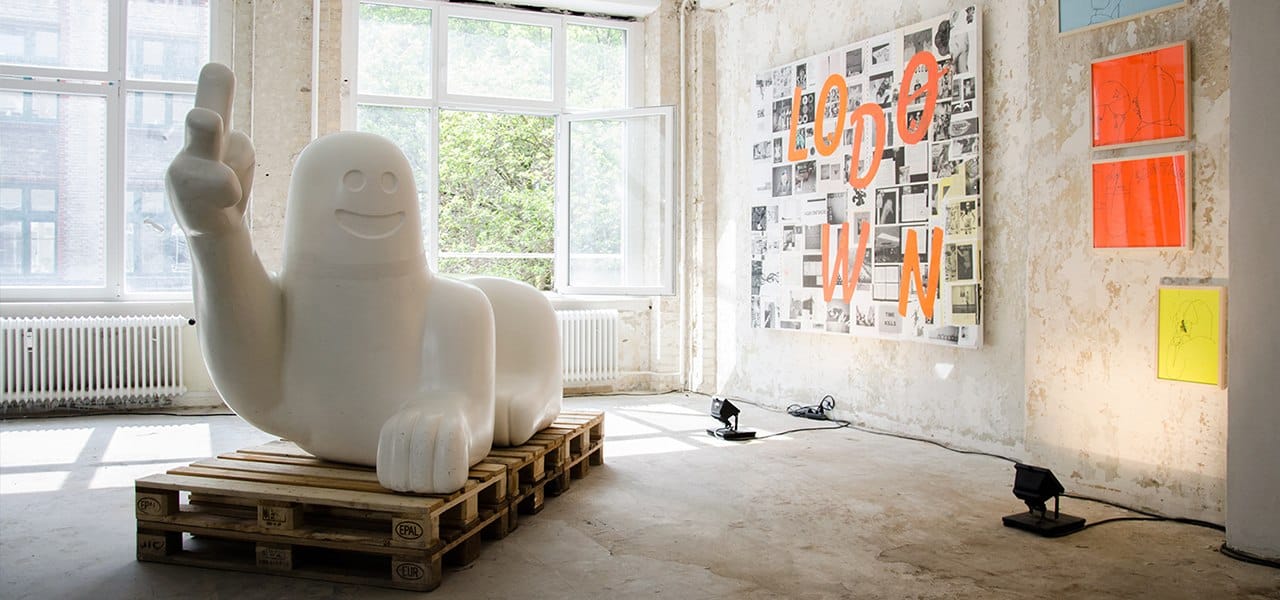
Lodown #100 featuring Lars Eidinger on the cover, 2016
A few magazines in the world have a reputation as awe-inspiring as Lodown Magazine. Although many of us would relate it to urban culture and perhaps to street art as well, Lodown turned out to be evasive of categorization. It is perhaps one of the first magazines to successfully overlap the world of pop culture with alternative lifestyle, without compromising either of the two. This does not come as a big surprise, given that its founder, Thomas Marecki, is such a versatile artist himself, who calls himself a “surfer”, in a sense that he is always heading towards a new wave, but still being able to pick the right spot. Apparently, his most popular project – Lodown Magazine – proves this theory quite well.

Akiko Watanabe: cover #49, “Paris Burning”, 2005
How Thomas Marecki Founded the Zine
Thomas Marecki is a graphic designer by profession, but his interests extend beyond design per se. You will see him working as an artist or a graffiti writer as well. After he finished working for a Californian magazine called Ray Gun Magazine, Marecki decided to establish a special kind of magazine, dedicated to “pop culture and the art of movement”, as the German title says: Lodown Magazine für Popkultur und Bewegungskunst. Although it was published in Berlin (which hasn’t changed since day one), it was written in English and distributed worldwide. The first edition went out in 1995, while Berlin was still a city of great social changes and a magnet for free spirit. Its genuine quality was evident from the start, as it reflected all the current trends, but was somehow capable of surpassing the mainstream. Always slightly ahead of its time, the magazine was focusing on different aspects, but the essence remained the same – and it was to offer a high-quality, but non-alienating alternative, and to get the best out of contemporaneity.

eddie otchere: Lodown, 1996 metalheadz session london with photek/unknown/goldie
Lodown Magazine – from 1 to 100
Lodown was mainly focused on art, music and “acrobatics”, which is probably how you could address skate culture. However, each issue was different, and it gave an opportunity to thousands of different artists to express themselves on these colorful pages – and here the word “colorful” is used quite literally, as the magazine owns one of the most flamboyant visual identities out there. Additionally, most of the content was reserved for the visuals, which made the zine visually informative and even educative. Each edition had a completely different appeal, even the typography changed. The only thing that remained the same is the title of the magazine, and that “something” which cannot be expressed in words, but was virtually present in each edition. You will be able to find basically anyone whose name relates to the world of urban and pop culture in the editions of this magazine, regardless of their profession, age or occupation, from Michael Jordan to Takashi Murakami. In 2001, they were one of the first ones to interview Banksy – which happened sometime before “street art became mainstream”, as Marecki says. This inclusiveness, executed in a clever way, is one of the things that makes the magazine so exclusive. After all, the disregard of stereotyped matter is what defines urbanity, and what kept the magazine going for so long.
End of an Era
The year 2016 marks the 21st birthday of the ever progressive magazine, and it also welcomes its 100th issue. However, you may have noticed that the major part of this article was written in a past tense, which could give you a hint of what’s happening. Apparently, Lodown number 100 will, at the same time, be the last one. As much as this comes as a sad news that could make us apprehensive toward the future of culture, it may also seem as a reasonable gesture, precisely because of the zine’s realistic approach and attitude. It’s better to burn out than to fade away – a frequently quoted statement of Kurt Cobain’s turns out to be useful in this situation. The founder’s ability to sense how to move in the right direction tells him that the printed format is dying, if it’s already not dead. The era is coming to an end, and the output of data is changing shape (a topic beautifully interpreted in one of the magazine’s latest features). That said, it is possible that Lodown may change its form and resurrect sometime in future, but the printed, horizontally-oriented format that we used to love is now gone. And we simply have to believe Marecki that this choice was the right one.

Lodown 100 exhibition, Berlin 2016, Mark Gonzales – Sphinx, 1997 / Marok, Lodown BW canvas, 2014 / Stefan Marx, Drawings 2015 Photo: Marchi Marcell
Lodown Is Not Dead
But don’t put on the sad face just yet. Marecki recently talked about the magazine’s 100th edition as a “turning point”, and not as a final farewell. Lodown will, reportedly, continue publishing books and special editions – just like it did in the past, for that matter. Until then, you will be able to order any of the past issues online, but also some of their special publications and books. Marecki guarantees high-quality content, and only the most relevant and engaging topics that resonate with the Lodown spirit.